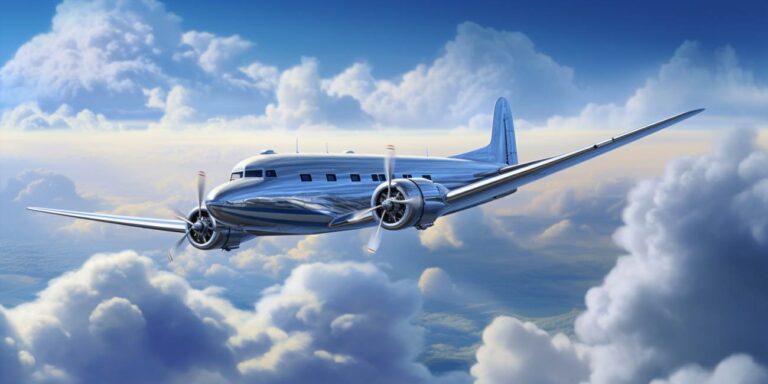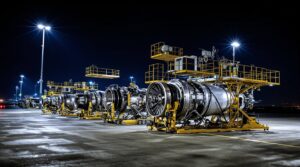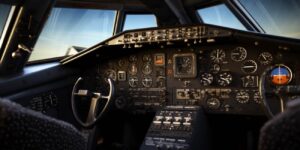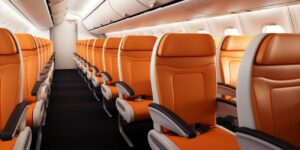Let’s delve into the intricacies of the Boeing 737 vs Airbus A321 saga, where every wingtip and fuselage design choice could make all the difference. The Boeing 737, a stalwart in the aviation world, has been a symbol of reliability and efficiency for decades. Its iconic design and widespread usage make it a go-to choice for airlines globally.
On the other side of the runway, we have the Airbus A321, a contender that boasts modernity and innovation. The A321’s spacious cabin and advanced technology have garnered attention, challenging the traditional supremacy of the Boeing 737.
One key aspect to consider in the Boeing 737 vs Airbus A321 debate is fuel efficiency. The Boeing 737, with its latest MAX series, emphasizes cutting-edge aerodynamics and fuel-saving technologies. Meanwhile, the Airbus A321 prides itself on a superior fuel-efficient engine, aiming to soar above the competition in terms of eco-friendliness.
Passenger capacity plays a pivotal role in this aeronautical clash. The Airbus A321, with its extended fuselage, accommodates more passengers than the Boeing 737. Airlines must weigh the benefits of increased capacity against operational costs, fuel consumption, and airport infrastructure constraints.
Turning our attention to the cockpit, both aircraft offer state-of-the-art avionics systems. The Boeing 737 MAX series introduces a revamped cockpit design, focusing on pilot ergonomics and intuitive controls. Meanwhile, the Airbus A321 counters with its cutting-edge fly-by-wire technology, providing a seamless interface between the pilot and the aircraft.
In terms of market share, the Boeing 737 vs Airbus A321 competition extends beyond the technical realm. Airlines face a strategic decision in selecting the aircraft that aligns with their operational needs, route networks, and long-term business plans.
As the Boeing 737 vs Airbus A321 narrative unfolds, the aviation industry witnesses a clash of titans. Each aircraft brings a distinct set of strengths to the table, leaving airlines to navigate the skies with careful consideration of their specific requirements. In this ever-evolving saga, the ultimate victor depends on which aircraft can ascend above the clouds and capture the hearts of both airlines and passengers alike.
Boeing 737 versus airbus a321 – comparison of dimensions and performance
The Boeing 737 and Airbus A321 are fierce competitors in the narrow-body jet market, each vying for dominance with unique features and capabilities.
Starting with dimensions, the Boeing 737 and Airbus A321 have distinct differences. The length of the Boeing 737 typically ranges from 102 to 138 feet, depending on the variant, while the Airbus A321 boasts a slightly longer length of around 146 feet. This variation in length can impact the aircraft’s capacity, fuel efficiency, and overall performance.
When it comes to wingspan, the Boeing 737 generally has a wingspan of 112 feet, whereas the Airbus A321 has a broader wingspan of approximately 117 feet. The difference in wingspan can affect aerodynamics, stability, and the aircraft’s ability to navigate different airports and routes.
Now, let’s delve into performance. The Boeing 737 series is renowned for its fuel efficiency and versatility. With a range of 2,935 to 3,850 nautical miles, depending on the model, it caters to both short-haul and medium-haul flights efficiently. On the other hand, the Airbus A321 offers an impressive range of 3,200 to 3,300 nautical miles, making it a competitive choice for various routes.
Examining capacity, the Boeing 737 typically accommodates 85 to 230 passengers, while the Airbus A321 has a higher seating capacity, ranging from 185 to 240 passengers. Airlines consider these differences in capacity when making decisions based on their route networks and passenger demand.
Additionally, the Boeing 737 is celebrated for its reliability and widespread use in the aviation industry. It has a storied history with numerous iterations, allowing airlines to choose a model that aligns with their specific operational requirements. Meanwhile, the Airbus A321 has gained popularity for its modern design and advanced technology, appealing to airlines seeking the latest innovations in aviation.
Boeing 737 vs airbus a321 – passenger cabin comfort and equipment
When it comes to passenger cabin comfort in the perennial debate of Boeing 737 vs Airbus A321, both aircraft offer impressive features, but nuances define the experience. The Boeing 737 boasts a cabin design that emphasizes spaciousness and ergonomic seating. The seats are designed with modern materials, ensuring both durability and comfort during long flights. The legroom is generous, allowing passengers to stretch and move comfortably.
On the other hand, the Airbus A321 focuses on an innovative approach to enhance passenger cabin comfort. The seats are meticulously crafted to provide maximum support and adaptability. Airbus emphasizes a balance between ergonomics and space efficiency, making the legroom adequate for most passengers. The cabin layout is designed to create a sense of openness, contributing to a pleasant journey.
When it comes to entertainment systems, both aircraft showcase advanced technologies to keep passengers engaged. The Boeing 737 features state-of-the-art entertainment systems with individual screens for each seat, offering a plethora of movies, TV shows, and interactive content. The intuitive interface ensures a seamless experience for passengers.
Meanwhile, the Airbus A321 incorporates cutting-edge entertainment systems that cater to the diverse preferences of passengers. The central entertainment hub provides a wide range of options, and passengers can enjoy a personalized experience. The touchscreen controls add a modern touch, allowing passengers to navigate the entertainment systems effortlessly.
Examining seats on both aircraft, the Boeing 737 and Airbus A321 prioritize passenger well-being. Boeing’s approach leans towards a classic and proven design, focusing on reliability and time-tested comfort. Airbus, on the other hand, introduces a blend of innovation and tradition, creating seats that are both aesthetically pleasing and ergonomically sound.
Considering legroom, it becomes evident that both Boeing and Airbus understand the importance of passenger comfort. The Boeing 737’s generous legroom provides ample space for passengers to move and stretch, while Airbus A321’s thoughtful design ensures that legroom is optimized for comfort without compromising the overall cabin layout.
Boeing 737 versus airbus a321 – fuel consumption and flight economy
The comparison between Boeing 737 and Airbus A321 extends beyond the sleek exteriors and powerful engines. One crucial aspect that airlines weigh heavily in their decisions is the fuel consumption and overall flight economy of these aircraft.
When it comes to fuel efficiency, both the Boeing 737 and Airbus A321 incorporate advanced technologies to optimize combustion. The engines of these aircraft are designed to achieve higher thrust with lower fuel consumption, contributing to a greener and more cost-effective operation.
In terms of operating costs, the battle is nuanced. The Boeing 737 boasts a reputation for lower direct operating costs, attributed to its streamlined design and market experience. On the other hand, the Airbus A321 counters with its larger capacity, allowing airlines to distribute operational expenses across more passengers, potentially lowering the cost per seat.
Examining the overall profitability, factors like route lengths and passenger demand come into play. The Boeing 737‘s efficiency on shorter routes might appeal to airlines focused on frequent, regional flights. Meanwhile, the Airbus A321 could be a strategic choice for carriers aiming at long-haul operations with a higher passenger count, potentially translating to increased revenue and improved profitability.
Let’s delve deeper into a comparative analysis of the Boeing 737 and Airbus A321 using a structured table:
| Aspect | Boeing 737 | Airbus A321 |
| Fuel Consumption | Optimized combustion technology | Advanced fuel-efficient engines |
| Operating Costs | Lower direct operating costs | Potentially lower cost per seat |
| Profitability | Efficient for shorter routes | Suited for long-haul with higher passenger capacity |
As airlines navigate the complex decision-making process, the choice between the Boeing 737 and Airbus A321 ultimately depends on their specific operational goals, route structures, and fleet management strategies.






